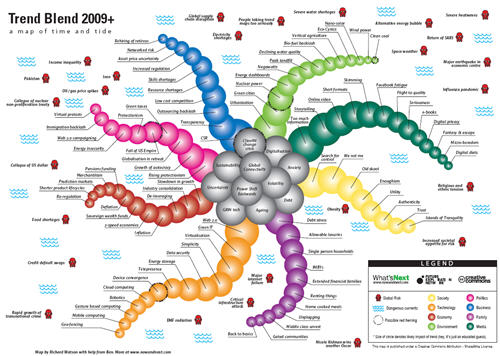Video excerpts of keynote speech for Sun Microsystems Partner Executive Forum: The Future of the Network Economy
I recently gave the keynote speech for a Sun Microsystems Partner Executive Forum, where Sun brought together the top executives from its extensive partner network for an update and relationship building session.
Below is an 8 min video containing brief excerpts from my keynote, titled The Future of the Network Economy.
Topics covered in the video include:
* In the Depression of the 1930s there was little structural change in the economy; in the current downturn there will be massive change.
* In a connected world you can – and must – reposition yourself across boundaries.
* Scale-free networks provide a common structure across society, web, infrastructure and more.
* Collaborative filtering is where the web is going: it enables us to find what is most relevant to us from infinite content.
* Open innovation requires identifying and stimulating the social networks where relevant ideas are proliferating.
* Our individual and organizational reputations will precede us, giving us and others insights into our expertise, reliability, and credibility.
* Strategy in an economy based on the flow of information and ideas requires us to rethink alliances and identify opportunities in new domains.
* The law of requisite variety means we must be at least as flexible as our environment.
* Studying ants’ collective behavior can help organizations understand how to tap emergence to create value.



